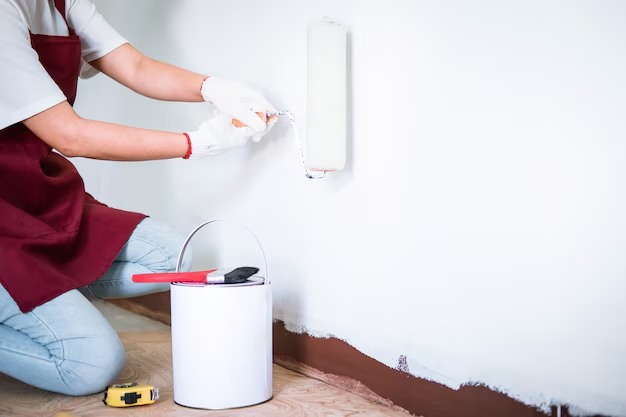Thinking of Painting Your Apartment? Here’s What You Need to Know
You've moved into a new apartment, and now you're staring at those drab walls. The idea of adding your personal touch with a fresh coat of paint can be enticing. But before you head to the hardware store, it's essential to know your legal and financial footing when it comes to painting your living space. Let's dive into the essentials of apartment painting and explore some beneficial resources that can aid you in making your place truly feel like home.
Understanding Your Lease Agreement
Lease Agreements Matter: Most rental agreements will have a clause that specifies what changes a tenant can make to the apartment. It's crucial to read your lease thoroughly. If the lease permits painting, it may come with conditions such as restoring walls to their original color at the end of your tenancy.
Landlord Approval: If your lease doesn't explicitly mention painting, it's wise to consult your landlord. A simple conversation can clarify what's permissible, and even if initially discouraged, landlords might consent if you propose neutral colors that can potentially improve the unit's marketability.
Financial Considerations
Budget-Friendly Painting: Transforming your apartment with paint doesn't have to break the bank. Here are a few financial tips to keep your costs down:
- DIY Approach: Consider painting the apartment yourself to save on labor costs.
- Bulk Buys: Purchase paint in bulk or look for discounts at local stores.
- Reuse Tools: If you've painted before, reuse your painting tools to save on expenses.
Government Aid & Financial Assistance: If your budget is tight, exploring financial assistance programs might be beneficial not just for painting but for overall home improvement and management of living expenses. Programs provide:
- Low-income housing aid
- Rent relief options
- Utilities assistance, which can free up funds for enhancing your apartment’s interior
Beyond Paint: Credit and Educational Resources
While fresh walls can enhance your living environment, why not use this opportunity to improve your financial health? These resources can offer substantial support:
Debt Relief and Credit Improvement: Investing in your financial future is as crucial as investing in your living space. Here are some steps that might assist:
- Debt Management Programs: Work towards lowering debt to free up funds for home improvement.
- Credit Counseling Services: Better credit could qualify you for cards with home improvement rewards or low-interest personal loans.
Educational Grants: Enhancing your skills can have a long-term impact. Consider:
- Grants for Online Courses: Learning about interior design or financial management can turn into more cost-effective home projects.
- Certification Programs: These can open the door to higher salaries or new job opportunities, indirectly boosting your home-improvement budget.
Final Thoughts
Painting your apartment involves more than just picking the right hue. By ensuring compliance with your lease and managing your finances wisely, you pave the way for a beautiful, budget-friendly home environment. Let’s wrap up with a list of useful resources that not only inspire a colorful transformation but also support a brighter financial picture.
🔑 Key Resources for Tenants and Home Improvers
- 🏠 Housing Assistance Programs: Discover state and federal programs designed to assist with rental costs.
- 🔧 DIY Savings Tips: Check community bulletin boards or online marketplaces for second-hand painting supplies.
- 💳 Credit Card Offers: Explore cards with cashback or rewards on home improvement purchases.
- 📚 Educational Opportunities: Look for online courses in financial literacy or interior design to expand your personal skillset and improve your home affordably.
- 🗨️ Community Support: Join local forums or groups to share tips and pool resources for collective savings.
By utilizing these resources, you'll not only be on track to having a beautifully painted apartment but also equipped with the knowledge and tools to manage your finances more strategically.
